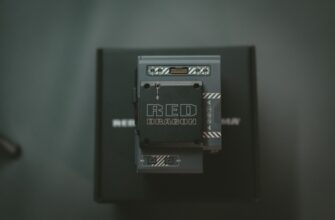## Introduction
In today’s digital age, securing cryptocurrency assets is non-negotiable. With hackers constantly targeting online systems, cold storage emerges as the fortress for your digital wealth. This comprehensive tutorial demystifies how to create a secure crypto wallet in cold storage—a method that keeps your private keys completely offline. Whether you’re safeguarding Bitcoin, Ethereum, or altcoins, mastering cold storage is essential for long-term security and peace of mind.
## What is Cold Storage?
Cold storage refers to keeping cryptocurrency private keys entirely offline, disconnected from the internet. Unlike “hot wallets” (software wallets connected online), cold storage wallets are immune to remote hacking attempts, malware, and phishing attacks. By isolating keys from networked devices, you create an impenetrable barrier against the most common crypto theft vectors.
## Why Cold Storage is Non-Negotiable for Security
– **Hack-Proof**: Eliminates vulnerability to online breaches
– **Malware Resistance**: Offline keys can’t be stolen by keyloggers or viruses
– **Long-Term Preservation**: Ideal for “HODLing” large investments securely
– **Control**: You own the keys—no third-party custody risks
– **Regulatory Safety**: Protects against exchange collapses or freezes
## Types of Cold Storage Wallets
1. **Hardware Wallets**: Physical devices (e.g., Ledger, Trezor) that generate and store keys offline. Most user-friendly option.
2. **Paper Wallets**: Printed QR codes containing public/private keys. Low-cost but vulnerable to physical damage.
3. **Metal Wallets**: Engraved steel plates storing seed phrases. Fire/water-resistant for disaster-proof backup.
## Step-by-Step Cold Storage Setup Tutorial
### Required Materials:
– Hardware wallet (we’ll use Ledger Nano X as an example)
– Pen and paper (or cryptosteel capsule)
– Private, offline environment
### Setup Process:
1. **Purchase Authentically**: Buy ONLY from official manufacturer websites to avoid tampered devices.
2. **Initialize Device**: Connect wallet via USB, set a strong 8-digit PIN on the device screen.
3. **Generate Recovery Phrase**: Write down the 24-word seed phrase shown on-device. NEVER digitize or photograph it.
4. **Verify Phrase**: Re-enter words when prompted to confirm accuracy.
5. **Install Apps**: Use manufacturer software (Ledger Live) to install blockchain apps (e.g., Bitcoin, Ethereum).
6. **Receive Test Transaction**: Send a small amount of crypto to your new wallet address to verify functionality.
7. **Transfer Assets**: Move bulk holdings from exchanges/hot wallets to your cold address.
8. **Physical Storage**: Store recovery phrase in a fireproof safe or bank deposit box. Keep device and phrase SEPARATELY.
## Critical Security Best Practices
– **Multi-Sig Consideration**: For large holdings, use multi-signature wallets requiring 2+ devices to authorize transactions.
– **Geographical Separation**: Store backup phrases in different physical locations (e.g., home + safety deposit box).
– **Regular Updates**: Update wallet firmware every 3-6 months via official apps.
– **Zero Digital Traces**: Never type seed phrases on computers or cloud services.
– **Inheritance Plan**: Share access instructions with trusted beneficiaries via secure legal channels.
## Cold Storage FAQ
**Q: Can I still earn staking rewards with cold storage?**
A: Yes! Many hardware wallets support non-custodial staking. Your assets stay offline while delegation occurs via secure signed transactions.
**Q: How often should I access my cold wallet?**
A: Only for major transactions or quarterly firmware checks. Minimizing access reduces physical exposure risks.
**Q: What if my hardware wallet breaks?**
A: Your crypto is secured by the recovery phrase—not the device. Buy a new wallet, enter your phrase, and regain access instantly.
**Q: Are paper wallets still safe?**
A: They work but are inferior to hardware wallets. Paper degrades and lacks transaction verification screens, increasing human error risks.
**Q: Can governments seize cold storage wallets?**
A: Only with physical access. Without your PIN/recovery phrase, contents remain encrypted and inaccessible.
## Final Thoughts
Implementing cold storage transforms you from a crypto user to a true digital asset guardian. By following this tutorial, you’ve created a vault that even sophisticated hackers can’t penetrate. Remember: security evolves. Revisit your setup annually, stay informed on wallet updates, and never compromise on physical key protection. Your crypto fortune deserves nothing less than this ironclad defense.








